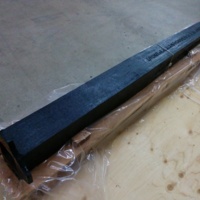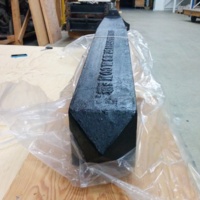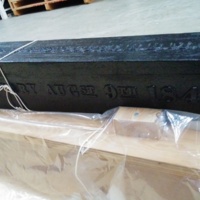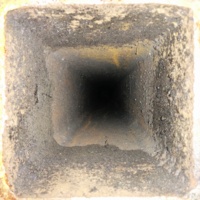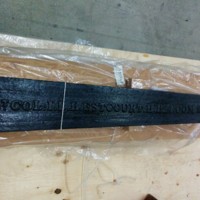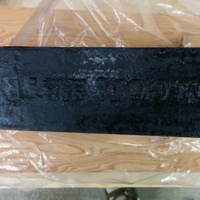Artifact: The Border Guard
Survey marker or question mark?
The international boundary monument is just one of many markers belonging to the survey marker collection at the Canada Science and Technology Museum. The collection was donated to the museum in 1973 but was born in 1952, when Dominion Land Surveyor Ralph Clark began preserving unique survey markers. Within a decade he had more than 100 boundary markers, as other surveyors contributed to the assortment. This monument was donated to Clark by International Boundary Commissioner A.F. Lambert.
The monument itself - tall, slender, black and shining - attracts attention. Aside from gracing it with aesthetic appeal, its physical characteristics are the most immediate sources of knowledge for studying the marker. The cast-iron monument is approximately 6 feet tall, has a base of six square inches and a crown of 4 square inches, and is entirely hollow. The key to discovering the monument's history, however, is the writing embossed on its four sides:
- ALBERT SMITH U.S. COMssr
- LT. COL. J.B.B. ESTCOURT H.B.M. COMssr
- TREATY OF WASHINGTON
- BOUNDARY AUGst 9th, 1842
The monument was erected along the Canada/US border during the 1840s in accordance with the Treaty of Washington, and under the direction of two gentlemen called Smith and Estcourt. But learning this much just inspires a desire to know more - the monument becomes not only a survey marker but also one giant question mark. How was it used? Who made it? Where does it come from? It is easy to run off in a thousand directions at once; the challenge is to bring this cold, hard object to life. The answer to that question is written in iron, "LT. COL. J.B.B. ESTCOURT H.B.M. COMssr," and in connecting the man to the monument.
